On the 1st of March 1902 the; former organiser of steam train races on the Morovian railway, diplomat, tobacco trader, insurance inspector and entrepreneur who sat on the board of the Daimler Motoren Gesellschaft (DMG), Emil Jellinek took delivery of the very first Mercedes Simplex in Nice, France, a month ahead of the Nice – La Turbie Hillclmb into which it was entered for E.T.Stead. A second Simplex was entered in the same event to be driven by Albert Lemaître, official winner of ‘the world’s first competitive motoring event’ from Paris to Rouen in 1897.

As the 35hp Mercedes, driven by Wilhelm Werner, of 1901 had done the new Simplex model swept to a 1-2 victory with Stead leading Lemaítre home. After Werner had won the Frankfurt circuit race later in the same year he and Otto Hieronimus returned to Nice in 1903 and claimed another 1-2 for the Simplex model with Otto beating Werner.
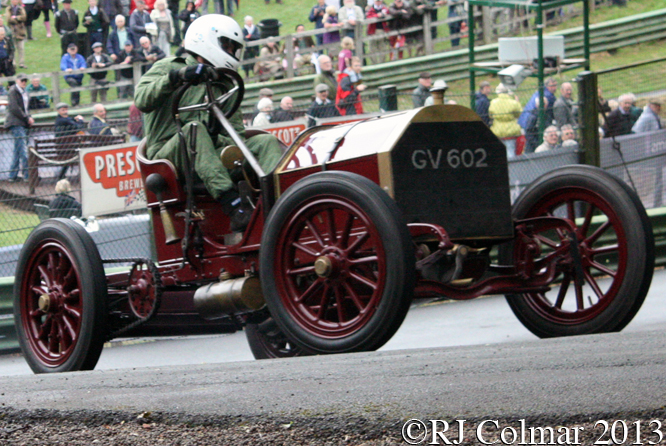
In his pursuit of a “mechanical greyhound” Jellink father of daughter Mercedes who’s name Jellink insisted on selling DMG’s products under, had encouraged Wilhelm Maybach and Gottlieb Daimler’s son Paul to pursue lightweight designs against all contemporary mechanical wisdom. That wisdom had been largely based on experience with steam locomotives which as a general rule of thumb could be reckoned to be faster the bigger they were.

While the Simplex was not outwardly revolutionary, it followed the Panard Systém with the engine at the front and rear wheel drive it was the detail improvements which made it such a good performer. In particular the transmission featured 4 forward speeds that were engaged by the worlds first foot operated (Simplex) spring pressure clutch which made changing gears a good deal easier and faster.
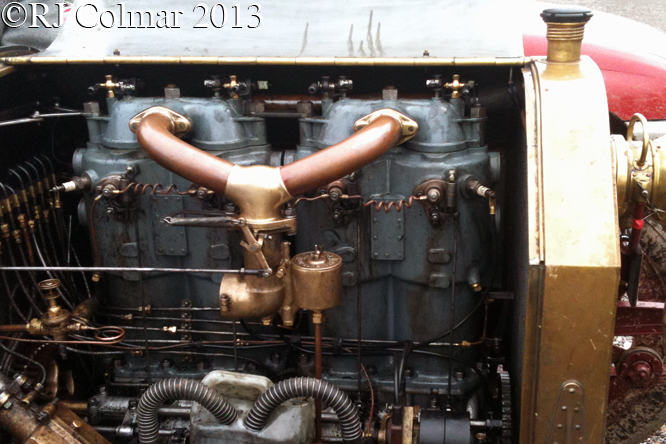
By enclosing the motor from above and below the Simplex relied on the draft of air through the worlds first honeycomb radiator to cool the motor which was not fitted with a cooling fan, but instead relied for a draft on the air vanes built into the 60 cm / 23 5/8ths inch flywheel. This improved cooling system allowed a 2 litre saving in water coolant over the previous model, now only 7 litres 1.5 gallons of water were required to cool the four cylinder motor.
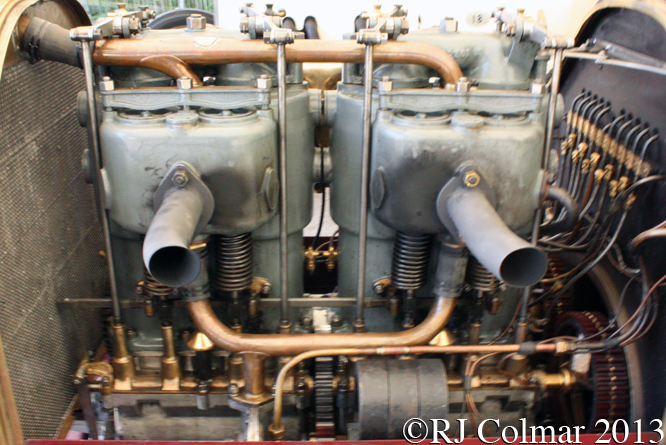
Interestingly the vehicle was not only fitted with regular rear wheel brakes as were most vehicles of the time but it was also fitted with a band brake acting on a shaft connecting the gearbox to the sprocket shaft which was also actuated by a foot pedal. When ever the brakes were applied water dripped from a reservoir onto the friction surfaces to keep them cool.
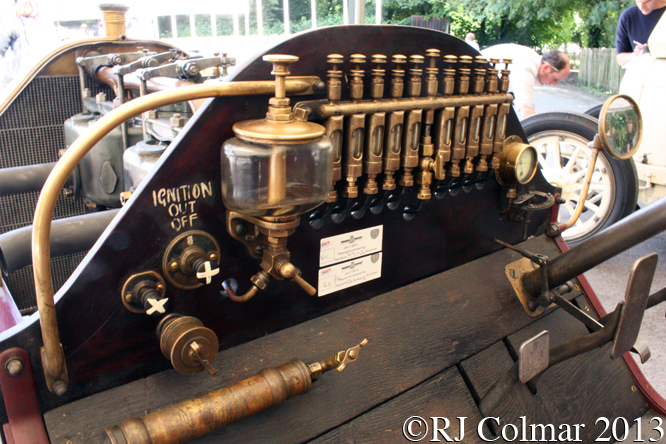
At the Berlin Motor Show in 1903 when the Simplex was presented to Emperor Wilhelm II he is alleged to have shared some Imperial Prussian humour with Wilhelm Maybach, saying “A truly beautiful engine you have here! But it’s not as simplex as that, you know.” Polish Count Zborowski crashed his Simplex out of the 1903 Nice – La Turbine hillclimb but Mercedes honour was salvaged later in the week when Hermann Braun won the Nice Mile race on the Promenade des Anglais.

Originally fitted with a 6,786 cc / 411 cui 40 hp motor later models, like today’s featured 1903 example driven by Ben Collings in the Exeter Trial with his father in the passenger seat and at Prescott, were fitted with a 9,236 cc / 563 cui producing 60hp at under 1500 rpm. A further race victory was achieved by Belgian Camille ‘Red Devil’ Jenatzy in the 1903 Gordon Bennett Cup run over a 40 mile closed figure of eight road course marshalled by over 2,000 police officers. This victory was only achieved after Mercedes lost their intended three 12.7 litre / 775 cui 90 hp machines, along with 87 further vehicles, in a fire at DMG’s Cannstatt plant and the factory had borrowed three 60hp Simplex vehicles from their customers to enter the race, the winning #4 car was lent by US millionaire Clarence Clay Dinsmore.
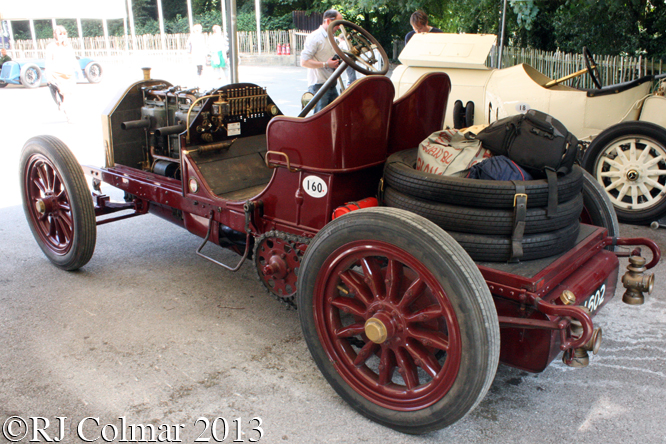
On March 14th 1902 Billionaire William K. Vanderbilt Jr took delivery of the fifth 40 hp Simplex to be built from the Cannstadt factory and drove it 600 kms to Paris where he arrived the following day, this was the first of several Simplex models Vanderbilt would own and this car is thought to be not only the oldest surviving Simplex, but the oldest surviving Mercedes in the world. In January 1904 Vanderbilt briefly held claim to the land speed record when he recorded a speed of over 92 mph at the wheel of a 90hp Simplex at Daytona Beach.

Louis Rigolly raised the record to 95.705 mph driving a Gobron-Brillie in Nice 2 months later. Pierre de Caters driving a 90 hp Simplex at Ostend in Belgium raised the bar to just over 97mph in May 1904 before Louis Rigolly became the first man to exceed 100 mph when he was timed at 103 mph driving his Gobron-Brillie Ostend in July 1904.
Manufactured from 1902 to 1909 there are thought to be just 13 Simplex cars still in existence, GV 602 has been in the Collings family for many decades.
Thanks for joining me on this “It’s not Simplex” edition of “Gettin’ a li’l psycho on tyres”, I hope you will join me again tomorrow when I’ll be looking at a how the Red Bull young guns team got on in the 2013 Formula One Championship. Don’t forget to come back now !

